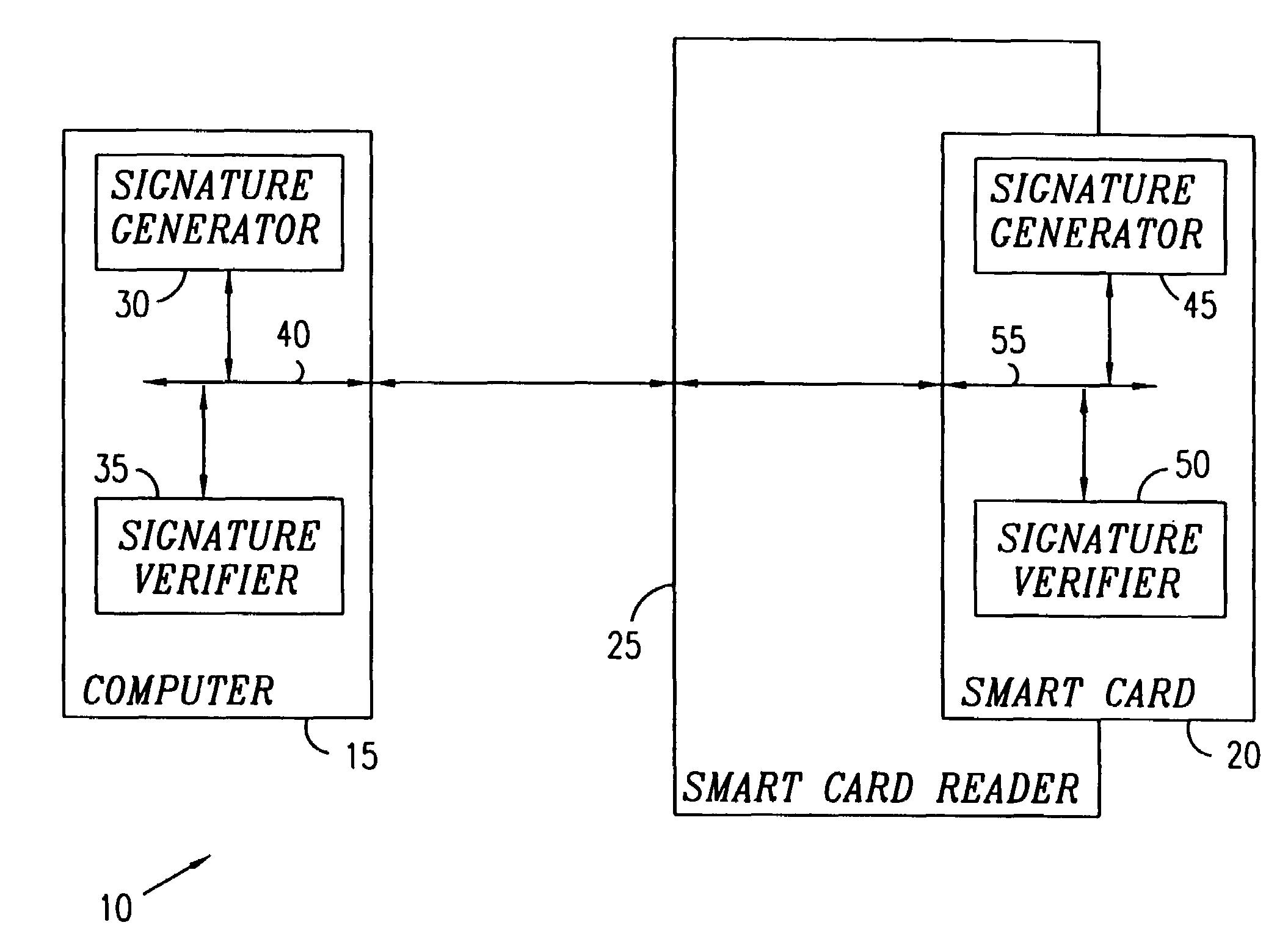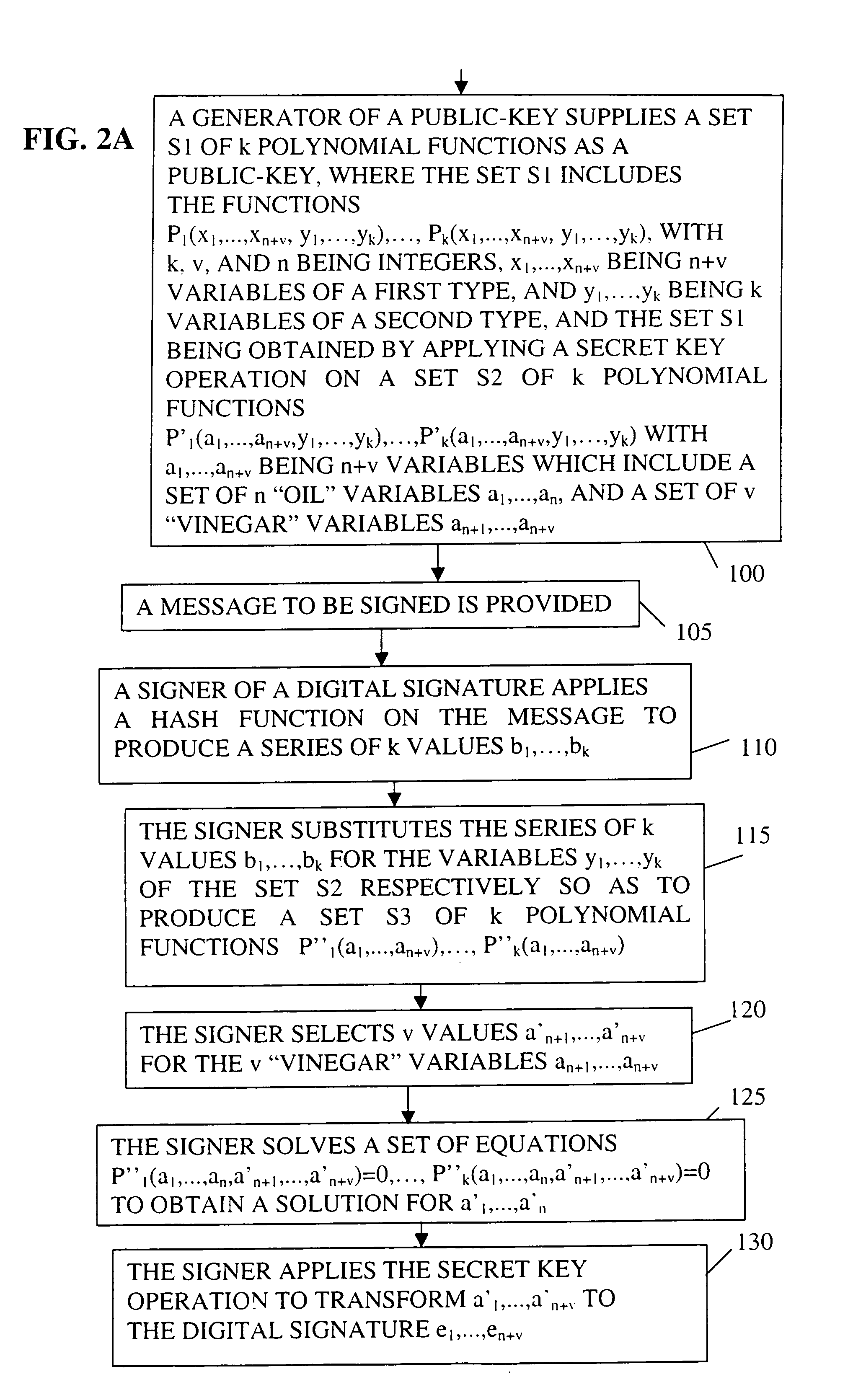Public-key signature methods and systems
a public key and signature technology, applied in the field of cryptography, can solve the problems of limited computing resources and relatively slow operation of public key schemes
- Summary
- Abstract
- Description
- Claims
- Application Information
AI Technical Summary
Benefits of technology
Problems solved by technology
Method used
Image
Examples
Embodiment Construction
[0032]Reference is now made to FIG. 1 which is a simplified block diagram illustration of a preferred implementation of a system 10 for generating and verifying a digital signature to a message, the system 10 being constructed and operative in accordance with a preferred embodiment of the present invention.
[0033]Preferably, the system 10 includes a computer 15, such as a general purpose computer, which communicates with a smart card 20 via a smart card reader 25. The computer 15 may preferably include a digital signature generator 30 and a digital signature verifier 35 which may communicate data via a communication bus 40. The smart card 20 may preferably include a digital signature generator 45 and a digital signature verifier 50 which may communicate data via a communication bus 55.
[0034]It is appreciated that in typical public-key signature scheme applications, a signer of a message and a receptor of a signed message agree on a public-key which is published, and on a hash functio...
PUM
 Login to View More
Login to View More Abstract
Description
Claims
Application Information
 Login to View More
Login to View More - R&D
- Intellectual Property
- Life Sciences
- Materials
- Tech Scout
- Unparalleled Data Quality
- Higher Quality Content
- 60% Fewer Hallucinations
Browse by: Latest US Patents, China's latest patents, Technical Efficacy Thesaurus, Application Domain, Technology Topic, Popular Technical Reports.
© 2025 PatSnap. All rights reserved.Legal|Privacy policy|Modern Slavery Act Transparency Statement|Sitemap|About US| Contact US: help@patsnap.com



